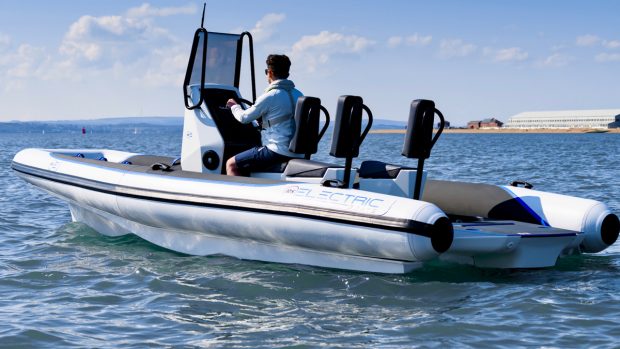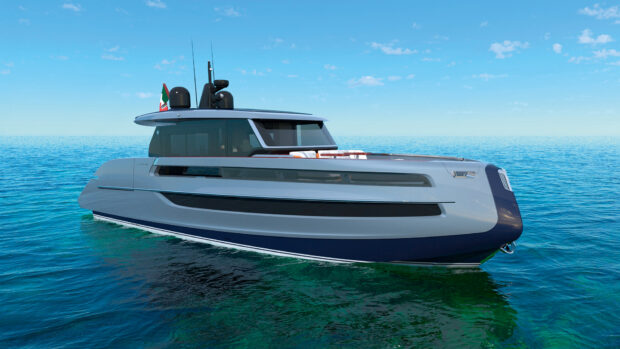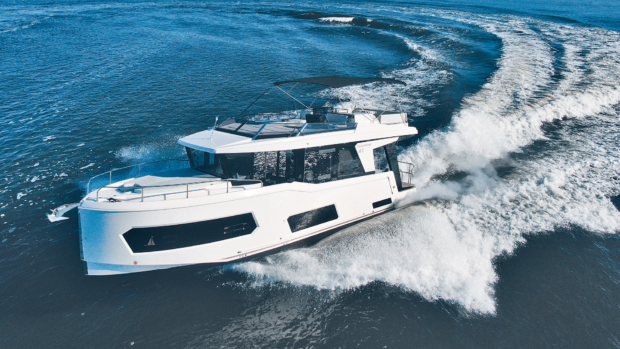Chonos has taken over Scott and Mary's lives and they even stayed at a dock for (gasp) two nights running
Position: Estero Pailad Chiloe Island, Chile
Scott (YT) and Mary Flanders (MS) left Gibraltar on 16 September 2006, and we’ll be following their journey every step of the way, thanks to this unique online “blog”. For a complete list of all the couple’s blog entries click here
Over the last few days Chonos has taken over Scott and Mary’s lives and they even managed to stay at a dock for (gasp) two nights running. They must be becoming marina queens
Saturday 19 January
Yesterday we were enjoying another sunny, no wind day en route to our last anchorage before jumping across the Golfo de Corcovado and to Chiloe Island. YT was perusing the Italian guide and saw an anchorage just around the corner from where we were. It had a dock and a restaurant at the top of the hill so we decided to give it a go. The small resort is located in the northern-most point of two fjords, which cut into Isla Jechica (pictured). The dock looked secure so we tied up with the help of two marina employees, who turned out to be the manager, Nelson, and island guide, Daniel (pictured). Nelson apologised and said there would be a slight fee for docking. Well, OK. They gave us a tour of the facility, which includes guest cabins, a main house, and a restaurant including a sitting room, bar, free Internet and reading room upstairs. The whole resort is new, rustic and first class. Off we went with Daniel on our first hike to an inland lake, with Chonos romping here and there. Daniel is very much into flora and fauna and explained things along the way, which was very interesting. Among other things he showed us the Chilean version of a flytrap plant. Unlike the familiar one that closes on a fly, these have spikes like a flower. At the end of the spikes are shiny droplets of sticky sweet glue type stuff that holds the fly.
Afterwards we invited Daniel over for cocktails and conversation.
Last night was our first chance to experience Chilean seafood, their speciality. We were greeted at dinner with Pisco Sours, a Chilean staple drink. Next we had small stone crab type claws and an abalone appetizer followed by pork tenderloin with veggies. We sank a bottle of Chilean red with dinner and a coffee afterwards with a dessert. The food and presentation were impressive.
This morning it was a hike to the top of a high hill overlooking the fjord and surrounding waterways. We took showers and then retired to the reading room before settling down for dinner. Tonight we again enjoyed Pisco Sours, and to eat we had a beef and pork appetizer, fresh salmon with a honey glaze and dessert followed by coffee. The food couldn’t have been better and Nelson and Daniel were wonderful company.
A Chilean man, who keeps it as his pride and joy, owns the resort. The Chilean government give a 100 year land lease, in this case a large island, if it is improved, kept pristine and employs locals. The resort has about eight employees and we were the only guests, although February is supposedly the big month because it is the warmest and driest. Clientele is a mixture of families from Santiago and Europe with a few Americans sprinkled in. We were their first foreign powerboat cruiser ever and one of very few foreign cruisers at all. We stayed the second night, not because we wanted another great dinner, but to help support one man’s effort to keep a wilderness area pristine (at his substantial personal financial loss). Our support won’t go far because the entire bill was $160 but we did leave picture CDs with 125 pictures and permission to use them for advertising if they wish. Daniel said some will be used to upgrade their website in the future (www.islajechica.cl) if you would like a holiday in a remote location but with all amenities. Rates are very reasonable and the staff speaks good English.
Sunday 20 January
We left our new buddies and headed north. With our little princess emptying our freezer we needed to find a tienda or supermercado (grocery store) to buy some dog food. After contending with our first serious tidal flow in Chile we sat in Melinka, a 1200 person fishing village and the last stop before crossing the gulf. Not looking forward to the Armada cha cha we dinked to town with our zarpe and boat papers. Surprise, surprise the Armada duty officer copied our zarpe and asked for us to call on the VHF when we left, which we dutifully did after we had purchased some dog food, fresh fruit and veggies. The tienda merchant apologised for the low exchange rate for the US peso – even out here.
Later in the evening two young whale researchers stopped by in their large inflatable (one Chilean, one from the UK). Over some red wine we listened to their stories. It turns out the gulf just north is loaded with whales, some are even found in the channels we have just left, including humpbacks and giant blue whales. There is a different species of local krill, small shrimp-like critters, which are different from Antarctic krill. Research shows these groups of whales never leave the area to go to Antarctica (as presumed in the past) but feed here before heading north in the winter. After the whale stories we heard about the salmoneras (salmon farms) and the ins and outs of that industry. Highlights included sea lions invading the nets, drowning, being shot by fishermen and salmon escaping through holes in the net into the wild. Apparently, salmon are very aggressive eaters and are supplanting the local species. When a pen full of salmon (20,000) get diseased they are dumped into the wild rather than being harvested and brought to Puerto Montt for disposal. The average salmonera has eights pens, salmon farming is Chile’s second largest industry bringing billions of dollars to the economy and almost all salmon are sold abroad with locals getting none. There are six inspectors that check the 4000 current farms but they don’t have boats so they have to ride out on the fishermen’s boats with an arrival itinerary given, and so on. It was an interesting session with the guys who are very serious about their environmental endeavours.
Monday 21 January
We were lucky enough to catch the early morning flood north, after of course taking princess for her morning romp ashore. We headed out riding the tide into well-spaced swells from the NW.
The swells increased as they clocked to the SW causing us to corkscrew a bit. Poor princess lost her breakfast on the foredeck but later in the afternoon things calmed down and she bounced back to life. We were hoping to see whales but it was not to be. We’ll be in our anchorage in a few hours. Let us quote from the Italian guide about the anchorage.
“This wonderful, deep and Y-shaped inlet has several anchorage possibilities. It is in a quiet natural setting with sheep and cattle grazing on green fields, black-necked swans and small wooden houses. The inlet is clear as far as the church, after which the bottom shelves rapidly. The tidal range is important, over 6m, and the resulting streams are strong in the entrance. The farmers, living in the village by the church, sell fresh vegetables. The surroundings offer great hiking possibilities. Pailad is, in our opinion, one of the nicest places in all Chiloe’.”
Not bad mis amigos. Perhaps we’ll stay a bit. Life is good for the Egret crew. Ciao.









